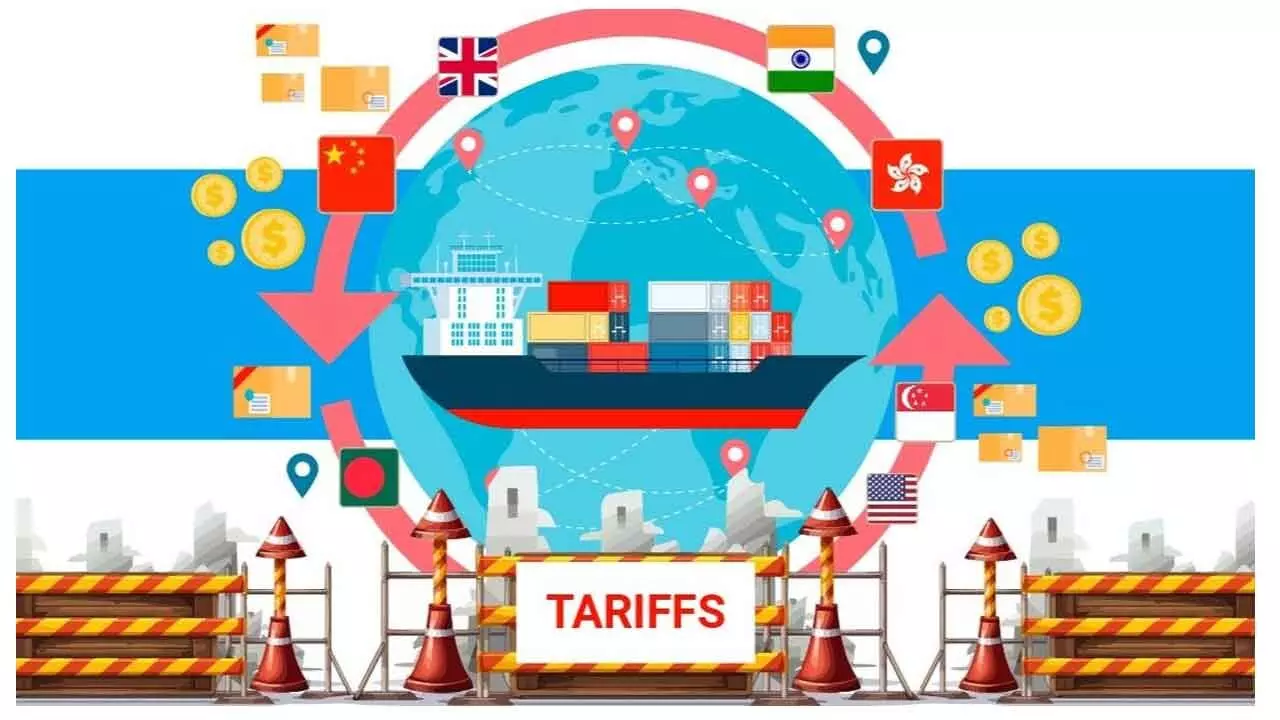Global Tariff Wars Adversely Impacting Growth Of The World Economy
Washington feels that countries, including India, with surplus trade balance are importing less and not correcting the imbalance
Global Tariff Wars Adversely Impacting Growth Of The World Economy

India has to be watchful of the global uncertainties even though its macroeconomic fundamentals are strong and the economy is expected to register a growth of 6.5 per cent for 2025-26
There has been substantial change in the global trade subsequent to the US policy of imposing tariffs on specific countries like Canada, Mexico and China and on specific items like steel and metals. There is also the threat of imposition of heavy tariffs on countries like India, which in America's view, slap high tariffs on imports from the United States.
Washington feels that countries, including India, that have surplus trade balance are not importing much from them to correct the imbalance. These are bound to have a greater impact on global trade and also result in higher inflation in USA.
In its article on the ‘State of Economy’, the Reserve Bank of India (RBI)mentions, "what is more certain, however, is that trade wars and escalating tariffs could have a deleterious impact on growth and fuel inflation not just in countries directly involved but for the global economy as a whole."
It cautioned that full blown traffic wars could raise the price level by one to 1.2 per cent in the US and reduce its real GDP growth by 0.6 per cent.
The US Federal Reserve in its March 19 FOMC meeting decided to maintain status quo by holding the Federal Funds rate at 4.25 per cent to 4.50 per cent given that inflation ‘remains somewhat elevated’. This implies that it would like to watch the incoming future data, the evolving outlook and balance of risks. In view of the uncertainties arising from the tariffs wars and their likely adverse impact on inflation, the Federal Reserve would like to monitor the implications of incoming information as part of the economic outlook.
It is to be noted that US real GDP growth (seasonally adjusted annual rate) in Q1 2025 to be -2.1 per cent. This declining outlook will impact other countries too with projections that the world GDP growth would fall from three per cent in 2025-26 to an average of 2.5 per cent during 2027-31 and 2.4 per cent during 2032-37. This is pointed out in the February Conference Board Global Forecast update. This will have greater repercussions on various countries in their future forecast of real economy growth.
In spite of efforts to end or bring about a ceasefire to the Ukraine-Russia and Hamas-Israel conflicts, continuation of the geopolitical tensions will impact the global economy and global trade. The priorities of European countries, particularly Germany and UK, among others, are to earmark more funds on defence spending. The US, though, is unlikely to support the move.
As per the RBI report, "Geopolitical tensions and changing global power relations are adding another layer of complexity."
The current tariff wars will affect exports, which emerging economies like India, are dependent upon for their domestic growth.
According to RBI, world exports will experience a significant decline in response to World Trade Policy Uncertainty (TPU). Unless, they adjust quickly in the period of uncertainty due to trade tariffs war, by way of suitable adjustments and looking to expand their market diversity, most emerging economies may see a direct impact on their domestic industrial production. Moreover, these countries rely heavily on exports as an engine of economic growth.
India has to be watchful of the global uncertainties even though its macroeconomic fundamentals are strong and the economy is expected to register a growth of 6.5 per cent for 2025-26. A significant boost is that at 3.6 per cent headline inflation in India has come down substantially in February, mostly due to reduction in vegetable prices in the winter season. However the core inflation has gone up to 4.1 per cent in February from 3.6 per cent in January.
According to RBI, robust kharif production, a better rabi sowing coupled with higher reservoir levels and seasonal winter correction in vegetable prices augur well for food inflation. It is therefore expected that RBI will continue to reduce repo rate, which in the earlier policy was brought down by 25 basis points to 6.25%.
RBI has summed up best in its bulletin: Going forward, India's structural strengths- sound fiscal policies, a well calibrated monetary framework, and digital transformation initiatives are expected to provide a strong foundation for long term sustainable economic growth.
However it is a fact that India's growth has come down substantially as against the projected growth rate. An ideal way to make amends and improve the situation is in protecting our higher GDP growth despite the global uncertainties.
(The author is former Chairman & Managing Director of Indian Overseas Bank)

